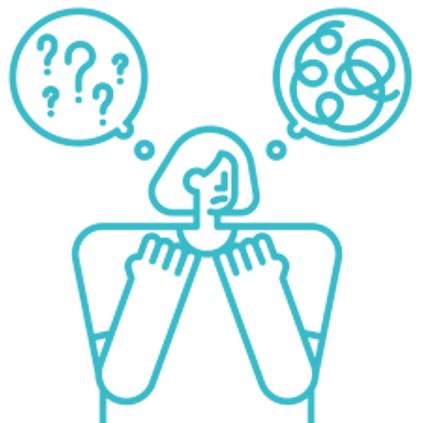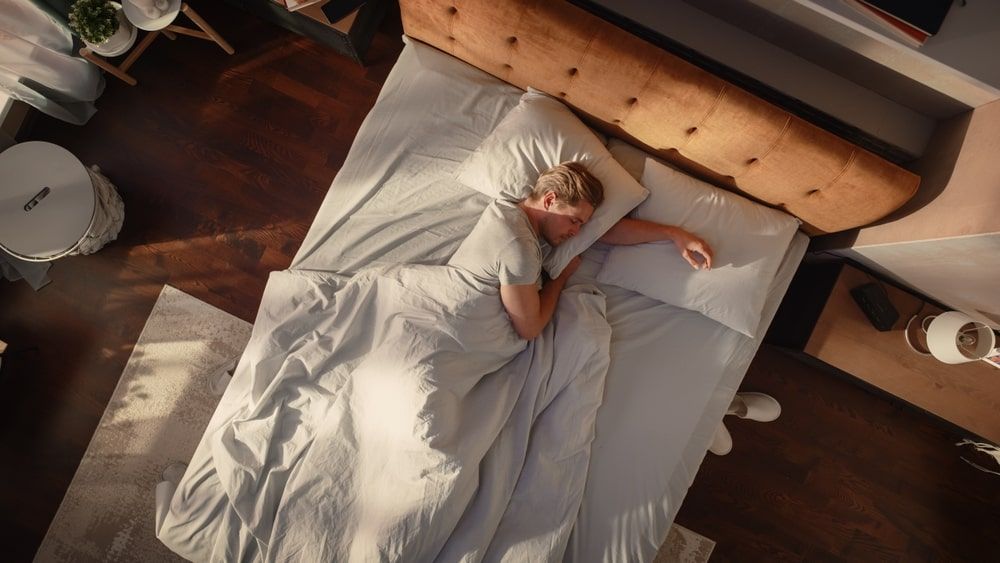In the intricate dance of human relationships, attachment styles play a pivotal role in shaping how we connect with others. Anxious attachment style is one such pattern that significantly influences how individuals interact, communicate, and form bonds. Rooted in childhood experiences and early relationships, this attachment style can impact various facets of adult relationships. In this blog, we’ll delve into the world of anxious attachment, exploring its symptoms, triggers, and providing real-life examples to offer a comprehensive understanding.
Anxious Attachment Style in Relationships: A Brief Overview
Attachment theory, developed by John Bowlby and later expanded by Mary Ainsworth, posits that early relationships with caregivers shape an individual’s attachment style. Anxious attachment, also known as anxious-preoccupied attachment, typically stems from inconsistent caregiving during childhood. This style is characterized by a strong desire for emotional closeness and fear of abandonment in adult relationships.
Symptoms of Anxious Attachment: Navigating Emotional Turbulence
Anxious attachment style, stemming from early experiences and relationships, manifests in distinct behaviors and emotional responses in adult relationships. These symptoms can profoundly influence how individuals perceive and engage with their partners. Let’s take a closer look at the symptoms of anxious attachment and how they impact relationships:
Fear of Abandonment:
Fear of abandonment is at the core of anxious attachment. Individuals with this attachment style often worry intensely about being left behind or rejected by their partners. This fear can be so overwhelming that it drives them to seek constant reassurance and validation. The underlying belief is that if they can ensure their partner’s continued presence, they will be safe from the pain of abandonment.
Seeking Reassurance:
Anxious attachers have a strong need for reassurance and affirmation from their partners. They constantly seek verbal and emotional confirmation of their partner’s love, often needing to hear “I love you” or other expressions of affection. This constant seeking of reassurance stems from their fear that their partner’s feelings might change abruptly.
Overanalyzing and Catastrophizing:
Individuals with an anxious attachment style in relationships tend to overanalyze their partner’s behaviors, words, and actions. They might take innocent remarks as hidden meanings or signs of impending abandonment. This tendency to catastrophize, assuming the worst possible outcome, can lead to unnecessary stress and misunderstandings in the relationship.
Intense Emotional Swings:
Anxious attachers often experience heightened emotional volatility. Their emotions can shift dramatically in response to perceived threats or changes in the relationship. They might go from feeling elated and secure one moment to feeling devastated and unloved the next, often without any external changes triggering these emotional shifts.
Clinginess and Dependency:
A hallmark of anxious attachment is the tendency to become overly dependent on one’s partner for emotional stability and happiness. This dependence can result in clinginess, where individuals struggle to function independently and fear being alone. They might prioritize their partner’s needs and desires over their own.
Difficulty Trusting:
Due to their fear of abandonment and past experiences of inconsistency, individuals with anxious attachment find it challenging to trust their partner’s intentions. They might question the authenticity of their partner’s affection and constantly look for signs of deception or disinterest.
Unhealthy Jealousy:
Anxious attachers often experience intense jealousy, especially in response to perceived threats to the relationship. Even minor interactions between their partner and others can trigger feelings of jealousy and insecurity. This jealousy can strain relationships and lead to controlling behaviors.
Overwhelming Need for Closeness:
Individuals with an anxious attachment style crave intense emotional closeness and intimacy. They might expect their partner to fulfill all their emotional needs, often leading to unrealistic expectations that can be challenging for any partner to meet consistently.
Difficulty Managing Solitude:
Spending time alone can be particularly challenging for those with anxious attachment. Solitude can trigger feelings of anxiety and isolation, as they associate being alone with abandonment. They might go to great lengths to avoid being by themselves.
People-Pleasing Behavior:
Anxious attachers may engage in people-pleasing behavior to gain and maintain their partner’s affection. They might suppress their own needs and desires, prioritize their partner’s wishes, and avoid conflict to prevent any perceived threat to the relationship.
Triggers for Anxious Attachment Behaviors: Navigating Emotional Sensitivities
Understanding the triggers that activate anxious attachment behaviors is crucial for individuals seeking to build healthier relationships and manage their emotional responses. These triggers often stem from past experiences and insecurities, shaping how individuals perceive and react to situations in their current relationships. Let’s delve into some common triggers for anxious attachment behaviors and how they can impact interactions:
Perceived Threat to the Relationship:
Anxious attachers are hypersensitive to even minor changes in their partner’s behavior. A simple delay in responding to a message or a change in communication frequency can trigger anxious attachment symptoms like a cascade of anxious thoughts. An individual with an anxious attachment disorder might interpret these changes as signs of disinterest or impending abandonment, even when there’s no evidence to support such beliefs.
Physical Separation:
Physical separation from their partner can be a significant trigger for those with anxious attachment. Whether it’s due to work trips, vacations, or even a few hours spent apart, the distance can amplify feelings of insecurity. Their fear of being forgotten or replaced during this time can lead to heightened anxiety.
Lack of Reassurance:
Individuals with an anxious attachment disorder heavily relies on reassurance to quell their fears. When their partner fails to provide the expected level of affirmation or doesn’t respond with sufficient enthusiasm, it can trigger feelings of neglect and insecurity. This perceived lack of reassurance reinforces their fears of abandonment.
Ambiguity and Uncertainty:
Unclear communication or ambiguous statements from their partner can trigger anxious attachment behaviors. Anxious attachers are prone to filling in the gaps with negative assumptions. For instance, if their partner says they’re busy without elaborating, they might assume the worst and believe their partner is losing interest.
Emotional Distance:
Any sign of emotional distance, whether real or perceived, can trigger anxiety in individuals with an anxious attachment style in relationships. When their partner becomes less expressive or less available emotionally, they might feel a surge of panic and begin seeking ways to regain the emotional connection.
Comparisons with Others:
Seeing their partner interact with others, especially potential rivals, can trigger jealousy and insecurity. Anxious attachers might constantly compare themselves to others and fear that someone else might be more appealing to their partner.
Change in Routine:
Even minor changes in routine can disrupt the delicate equilibrium for those with anxious attachment. This could be as simple as a change in the usual time for phone calls or a shift in the frequency of dates. Such changes can evoke anxiety and cause them to question the stability of the relationship.
Negative Self-Talk:
Internal dialogue plays a significant role in triggering anxious attachment behaviors. Negative self-talk, fueled by deep-seated insecurities, can amplify their fears and lead to a cycle of self-doubt. They might convince themselves that they are unworthy of love, further intensifying their need for reassurance.
Relational Trauma:
Past experiences of rejection, abandonment, or inconsistent caregiving can act as triggers to an anxious attachment style in relationships. Situations that remind them of these traumas can evoke strong emotional reactions, prompting them to project these past hurts onto their current relationships.
Unmet Needs:
If their emotional needs aren’t consistently met, individuals with an anxious attachment style in relationships can become more sensitive to situations that seem to validate their fears with their partner. They might perceive any instance of emotional distance as confirmation that their partner is losing interest.
Real-Life Examples Illustrating Anxious Attachment Behaviors
Understanding how anxious attachment behaviors manifest in real-life situations can provide valuable insights into the challenges individuals with this attachment style face. Here are a few anonymized examples that shed light on the dynamics of anxious attachment style in relationships:
Constant Need for Contact:
Sarah often feels uneasy when her partner doesn’t respond to her messages promptly. If he’s busy with work or other commitments, her mind starts racing with negative thoughts. She worries that he might be losing interest or considering ending the relationship. Her fear of abandonment compels her to repeatedly check her phone for his messages, seeking any sign of reassurance that their connection is still strong.
Jealousy and Insecurity:
Alex becomes increasingly uncomfortable when he sees his partner interacting with others, especially with people of the opposite gender. He feels threatened by any attention his partner receives from others and starts imagining scenarios where she might develop feelings for someone else and leave him. His insecurity drives him to monitor her interactions closely and ask probing questions about her conversations.
Seeking Constant Reassurance:
Chris frequently asks his partner if she loves him or finds him attractive. Despite her consistent affirmations, his anxiety about the relationship’s stability persists. He feels a temporary relief when she reassures him, but the anxiety returns shortly after, prompting him to seek reassurance once again. This cycle in an anxious attachment style in relationships continues as he battles to quell his constant fears of being abandoned.
Over-analyzing Behavior:
When his partner expresses a desire to spend time alone or with friends, Michael’s mind starts racing with doubts. He overanalyzes her request, wondering if it’s a subtle hint that she wants to distance herself from him. He replays past conversations and interactions, searching for signs that he may have done something wrong. This habit of overthinking often leads to misunderstandings and unnecessary conflicts.
Fear of Misinterpretation:
Emily struggles with an anxious attachment style in relationships to communicate her needs and emotions to her partner. She’s afraid that expressing her true feelings might drive him away. As a result, she keeps her anxious attachment triggers bottled up. When her partner asks if something is wrong, she downplays her concerns, fearing that being honest will lead to conflict or even a breakup.
Reacting to Delays:
John is experiencing anxious attachment triggers, he becomes noticeably anxious when his partner takes longer than usual to reply to his messages. His mind immediately jumps to worst-case scenarios: she must be upset with him or losing interest. He starts to worry about the state of their relationship and might send multiple follow-up messages seeking an explanation for the delay.
Overcompensating to Keep Attention:
Linda goes out of her way to keep her partner’s attention and affection. She’s constantly planning elaborate surprises, buying gifts, and organizing activities to ensure that he remains interested in her. Her anxious attachment disorder causes her fear of losing him drives her to consistently go above and beyond, hoping that her efforts will secure his commitment
Get help from a NYC anxiety therapist!
Anxious attachment style in relationships can really take a toll on your mental health and relationship health. We provide anxiety therapy at Uncover Mental Health Counseling to support you in managing anxious attachment triggers. Follow these steps to get started:
- Reach out to Uncover Mental Health Counseling to arrange a free consultation call.
- Meet with an anxiety therapist in NYC for your initial session.
- Begin receiving the necessary support to cope with your anxious attachment style in relationships.






































